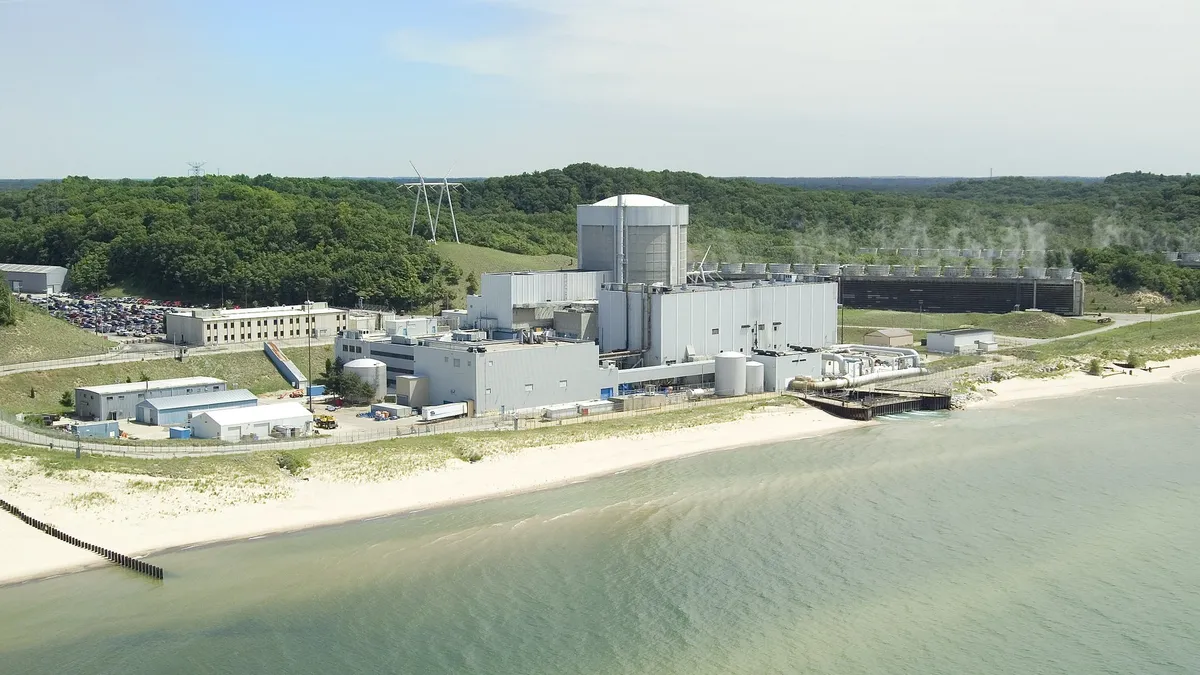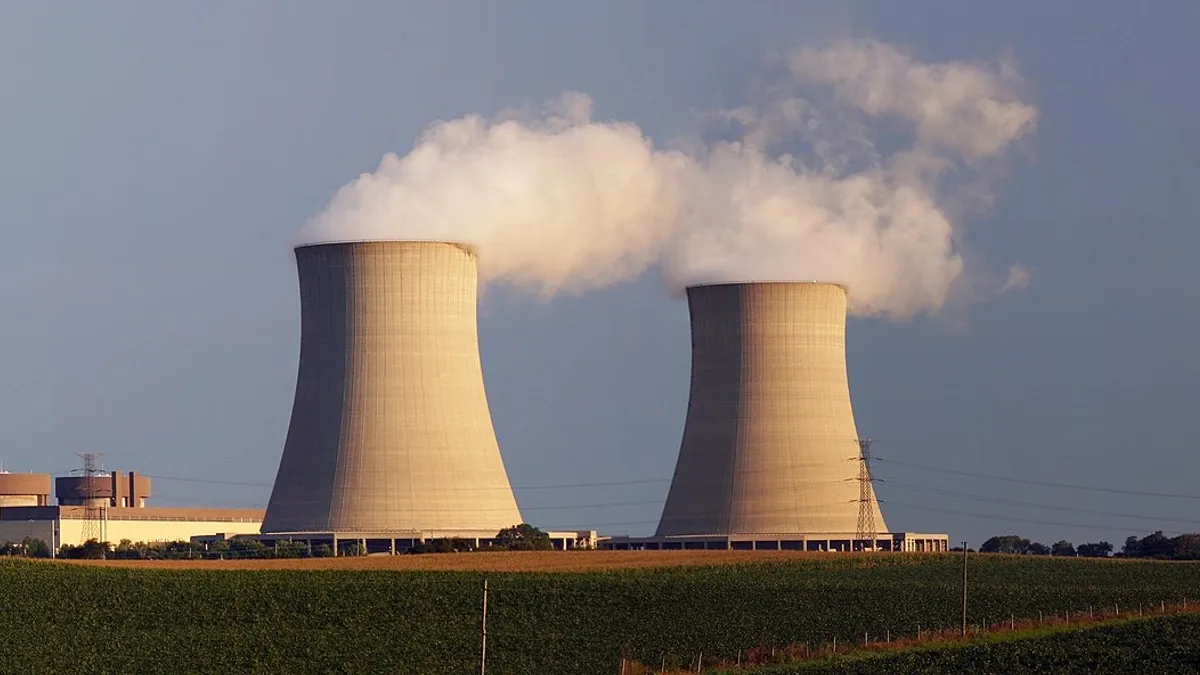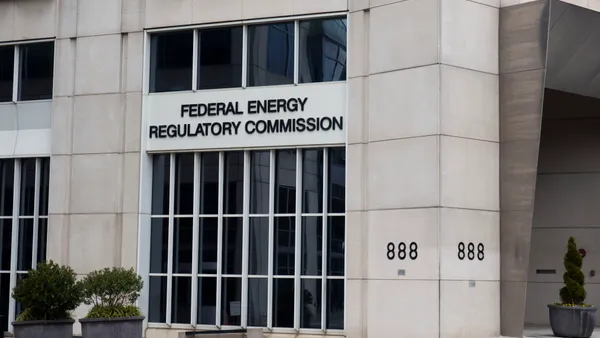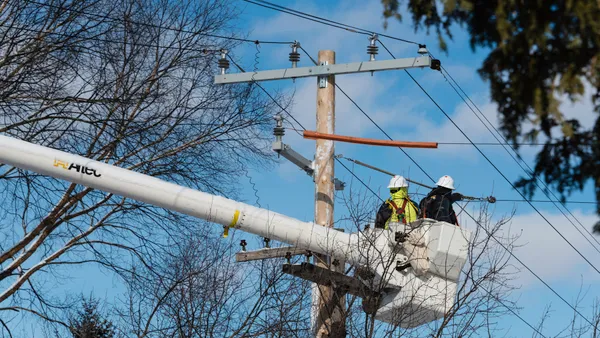Exelon’s new plan to support aging nuclear plants and cut carbon emissions is putting a big decision in front of Illinois lawmakers.
Will legislators make ratepayers rescue Exelon’s uncompetitive nukes to sustain reliability and an influential economic sector? Or will they turn to renewables and energy efficiency to fill the gap when the plants retire?
“There are likely to be tremendous cutbacks of basic social services and the legislature is likely to have to raise taxes or fees to make the budget balance,” said Environmental Law and Policy Center Executive Director Howard Learner. “Will legislators at the same time force consumers, through a non-bypassable charge, to pay hundreds of millions of dollars each year for the next six years to bail out Exelon nuclear plants?”
But many who make their livelihoods in and around the nuclear plants see things a bit differently.
“Part of the upcoming debate in Springfield should focus on what these plants mean to their host communities,” read a letter signed by Mayors from six nuclear plant neighbor cities. "Illinois nuclear facilities provide thousands of good jobs; the kind of jobs you can support a family on ..."
What Illinois stands to gain and lose
In Potential Nuclear Plant Closings in Illinois, a report to the legislature, four state agencies recommend a Low Carbon Fuel Standard (LCFS) as one of five market-based solutions to the challenges facing Exelon. Other possible solutions assessed by the agencies are (1) pure market economics, (2) a carbon tax, (3) a cap and trade program, or (4) a sustainable power standard.
In the report, the Illinois Commerce Commission concludes negative economic impacts from the closures would include:
- 2,500 direct job losses at the nuclear plants
- 4,431 indirect job losses at local businesses
- $1.8 billion in annual lost economic activity
- a 10% to 16% increase in wholesale power prices which would cause further economic impacts, including 896 job losses and $45 million in lost economic activity
Regional grid operators PJM and MISO calculate, according to Exelon, that early nuclear plant closures would drive Illinois electricity prices up 10%, costing Commonwealth Edison customers $437 million and Ameren customers $810 million to $1.2 billion in the first year.
Investments in energy efficiency and renewables would, however, create 9,600 new jobs by 2019 and $120 million in annual energy cost savings from lower electricity prices, the Commerce Commission concluded.
The Better Energy Solutions for Tomorrow (BEST) Coalition and the Chicago Mayor Rahm Emanuel-led Clean Jobs Coalition argue efficiency and renewables offer a more sustainable alternative to the nuclear plants.
Exelon’s LCFS is a cornerstone of both Senate Bill 1585 and House Bill 3293, legislation that Exelon argues would “help reduce carbon emissions, increase renewable energy, and maintain affordable, reliable electricity for consumers and businesses” as well as “ensure continued operations of the state’s nuclear power plants.”
“Illinois needs an all-of-the-above energy strategy that will help reduce harmful air emissions, grow renewable energy and maintain our state’s existing nuclear plants,” said Senator Mattie Hunter (D-Chicago).
“This comprehensive legislation balances the need to preserve our nuclear plants while at the same time promoting other low-carbon energy resources such as wind, solar, hydro and clean coal,” said Senator Sue Rezin (R-Morris).
The cost of nuclear power
Flat or declining Illinois electricity demand has resulted in an electricity oversupply thanks to Exelon’s 11-plant nuclear fleet, Dynegy and NRG coal fleets, existing, retrofitted, and new natural gas facilities, and a growing wind portfolio, according to Learner. With all these merchant generation sources fighting for a share of the competitive power markets, prices are falling.
“That means the less economically efficient plants are getting squeezed out,” Learner said. That’s good for consumers and the Illinois economy. But it is bad for Exelon because, he added, “the less efficient either have to cut prices or shut down.”
While Exelon’s LaSalle, Braidwood, and Dresden units remain competitive, the Clinton and Quad Cities units are not, and the Byron units are marginal, Learner said.
“As an NRC Commissioner, I licensed about twenty nuclear plants,” said Vermont Law School Adjunct Professor Peter Bradford, who also served as Chair of the Maine and New York utilities commissions. “But now nuclear just doesn’t make the cut economically.”
Contrary to Exelon claims, it is not low natural gas prices or negative power market prices caused by wind’s production tax credit that are the cause of its plants' financial problems, Bradford said.
“Ten years ago, the operations cost was between $0.01 per kWh and $0.02 per kWh but now, largely because of substantial capital investment needs, the operating cost is between $0.04 per kWh and $0.05 per kWh,” Bradford explained. “If plants were still able to operate in the $0.01 per kWh to $0.02 per kWh range, they would be fine.”
Not one, but two previous bailouts
Exelon’s LCFS will require Illinois investor owned utilities to purchase low-carbon energy credits for 70% of their power. Eligible sources would be solar, wind, hydro, nuclear, tidal, wave, and clean coal. The standard sunsets at the end of 2021, or when an EPA Clean Power Plan program supersedes it. It cannot increase electricity customer rates more than 2.015% above 2009 levels, or about $2 per month. Excess revenues would be rebated.
“Exelon is asking the legislature to change the rules of the competitive market in a way that would bail out its economically uncompetitive nuclear plants,” Learner said. “It wants to essentially re-regulate and require utilities to purchase 70% of their power from nuclear plants owned by Exelon. And force consumers to pay for it, even if the price is above the current market price.”
“Those reactors were already bailed out once,” Bradford added. “When electric restructuring led to competitive power markets, the nuclear plant owners insisted on stranded cost recovery.”
They were bailed out again last spring by PJM, Learner pointed out. By withholding part of its fleet from the May 2014 PJM capacity market auction, Learner explained, prices cleared at $120 per MW-day, doubling the RTO-wide clearing price of $59 per MW-day for planning year 2016/17. That produced, he reported from a UBS Bank analysis, almost $150 million more in capacity revenue for planning year 2017/18.
Exelon “couldn't have played its hand any better in the capacity auction,” one account of the UBS analysis reported.
Even if Illinois legislators go along with the Exelon-backed bills, “there is no reason to think this will be the last time Exelon has to come around,” Bradford said. “Even if gas prices don’t go lower, developments in storage, solar, and efficiency will put downward pressure on power prices and operational costs will continue to put upward pressure on nuclear plant costs.”
Kicker: The PJM capacity market auction
Though many think Exelon will get its way, Learner is unconvinced.
"I’m not saying it won’t happen, but the legislative session runs to at least the end of May,” he said. “PJM’s May capacity market auction could well provide considerable revenue to Exelon. Some in the legislature will ask how many gifts from the public wallet and business’s bottom line Exelon is going to get for the same nuclear plants.”






















